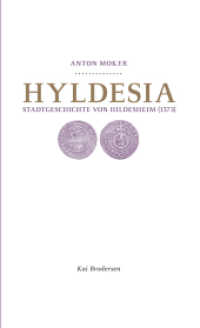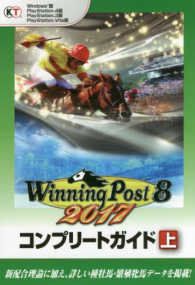Full Description
eBooks offer students as well as teachers, school and public librarians, and parents tremendous possibilities. This book explains how to expand and enhance the reading experience through the use of technology.
Today, eBooks are everywhere, and the use of digital learning materials is beginning to supplant traditional printed materials. As the world shifts to digital books, both teachers and students need to be comfortable and effective using materials in this format. This book helps you to apply eBook materials to existing curricula to create interactive educational activities and have access to more materials to support reading instruction, literacy, standards, and reading in the content areas.
Author Terence W. Cavanaugh, an expert on teaching with technology, describes numerous strategies for integrating eBooks into reading instruction and remediation for students in preschool through grade 6. He covers the hardware and software used, the wide range of formats available, and research conducted on the use of eBooks with students as well as how to access free resources such as digital libraries and special collections that make eBooks available for schools. The book also contains a chapter dedicated to using eBooks to help emergent or struggling readers.
Contents
Introduction
Part I: eBook Technology
Chapter 1: Why Use eBooks in the Classroom?
Defining eBooks
Advantages of eBooks
eBooks Versus Traditional Books
eBooks and Standards
Availability of eBooks
Conclusion
Online Resources
Chapter 2: The eBook Platform: Hardware and Software
The eBook TRIO
eBook Software Determines File Type
The Main eBook Choices
Conclusion
Online Resources
Chapter 3: eBook File Formats
Types of eBook File Formats
Flash and Web Format
eBook Apps (Apple and Android)
Presentation eBooks
Audiobook File Formats
Conclusion
Resources
Part II: eBook Sources
Chapter 4: Getting Free eBooks
Picture Books and Emergent Readers
Fiction, Including Short Stories, Chapter Books, and Novels
Nonfiction
General Library Collections with Children's or YA Sections
Coloring Books, Comics, and eMagazines
Chapter 5: eBook Stores and eBook Borrowing
eBook Stores
eBook Borrowing: Public Libraries and Lending Clubs
eBook Lending Clubs
Chapter 6: Converting and Cataloging Your eBook Collection
Converting eBook Formats
Converting Audiobooks
Cataloging Your Collection
Classroom Activities with the Class Catalog
Conclusion
Online Resources
Part III: Creating eBooks
Chapter 7: Creating eBooks as a Classroom Project
eBook Creation
Sample Lesson Plan: Fairytale eBooks
Online Resources
Chapter 8: Online Tools for Creating Picture eBooks
Storybird
CAST UDL Book Builder
Creating Comics
Online Resources
Chapter 9: Creating eBooks with Productivity and Other Software
Creating Text (TXT) eBooks
Creating Adobe Reader (PDF) eBooks
Creating eBooks for Kindle or Nook Readers
More Word Processing Tools
PowerPoint and Other Presentation Tools
Creating Audiobooks
Creating eBooks with iPads
Publishing Your eBook
Online Resources
Part IV: Integrating eBooks into the Classroom
Chapter 10: eBooks in the Classroom and School
eBooks, Literacy, and Reading
Integrating Technology
Book Cards
Assessing with eBooks
Online Resources
Chapter 11: Picture eBooks and Content Area Reading
Co-written by Gigi David and Katrina W. Hall
eBooks in Content Areas
Picture eBooks
Mathematics
Science
Social Studies
Visual Art and Music
Foreign Language
A Little Research Goes a Long Way
Online Resources
Chapter 12: eBooks and Struggling Readers
Co-written by Lunetta Williams and Andrea Thoermer
Struggling Readers
Adapting Text
Reading Aloud
Building Background Knowledge
Using Songs
Using Poetry and Nursery Rhymes
Setting Up a Readers Theater
Providing Wide Access to Books
Online Resources
Chapter 13: Gifted Students and Advanced Readers
Co-written by Christine Weber
Characteristics of Gifted Readers
Differentiating Instruction
Using eBooks with Gifted Readers
Next Steps
Where to Start?
Online Resources
Print Resources
Chapter 14: eBooks and ESL / ELL Students
Co-written by Jin-Suk Byun
The ELL Student
Educational Applications
The Connection between Spoken and Written Language
Text-Enhancing Functions
On-Demand Referencing
Promote Interaction in the Classroom
More Sites to Come
Online Resources
Chapter 15: Students with Special Needs
Accommodations Provided by eBooks
Sample Accommodation
Obtaining eBooks for Students with Special Needs
Achieving Success with eBooks
Online Resources
Appendix A: eBook Formats List
Index








